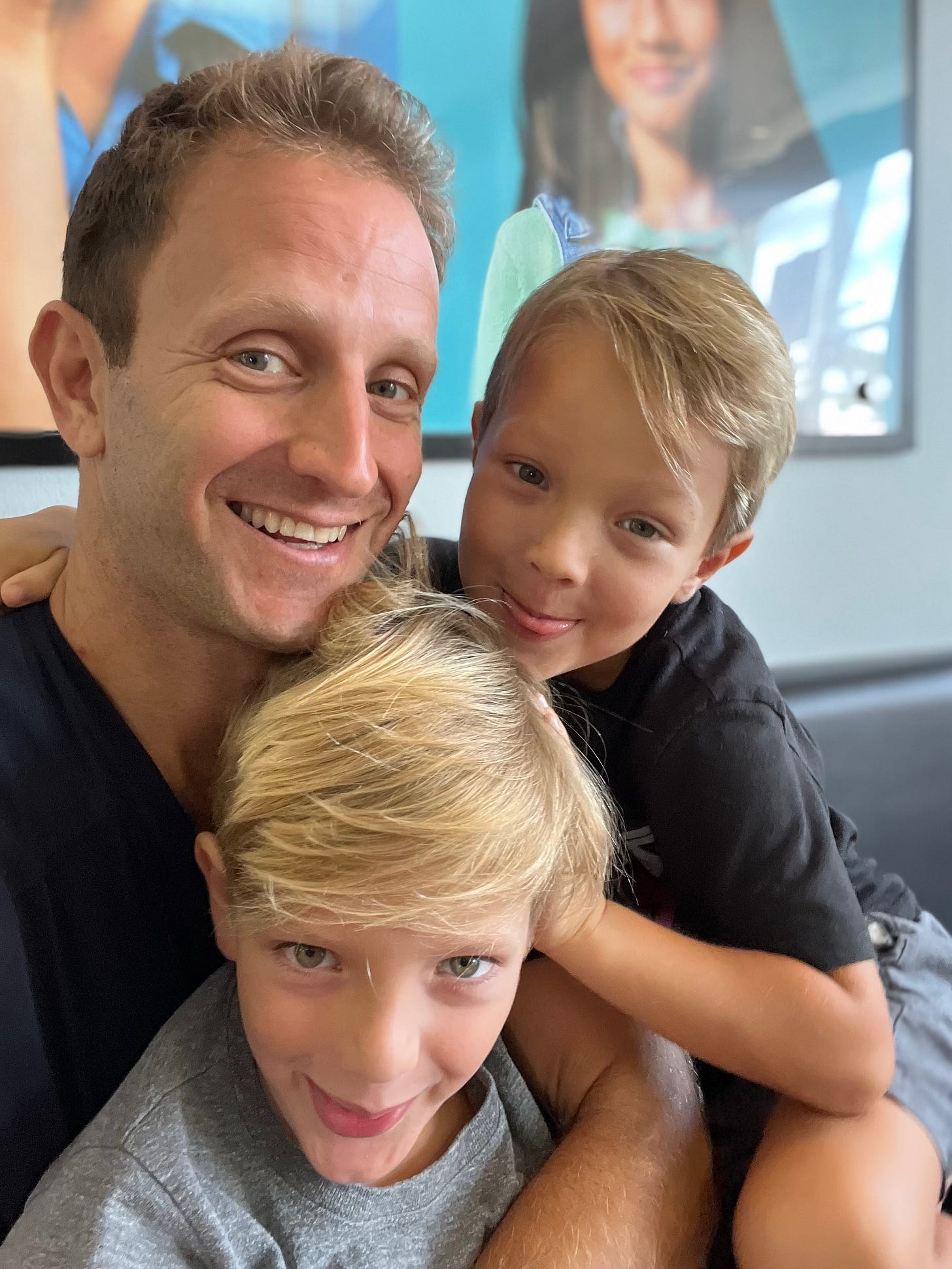Get Low
Movement, Mobility, and Connection
Embracing the ground is not merely a fitness technique—it's a powerful pathway to enhancing physical health, fostering personal growth, and strengthening family bonds. Over the past nine years as a father of two boys, I’ve learned that the floor is not just a surface to walk on, clean, or decorate; it is a vibrant space for movement, play, and embracing vulnerability.
When my oldest son Henry was just a few months old, I discovered the magic of getting down on the ground for connection. During the early stages of his life, we would lay together, play, giggle, and relax. Those initial tummy times eventually transformed into something special: wrestling matches we called "love wrestles" with his brother Hawk, where the rule was to avoid hurting anyone—only lovingly bringing them to the ground. We continued to evolve our play into imaginary landscapes filled with fort-building and moments of pure, unfiltered creative interaction.
Ultimately, these ground-based movements evolved into a regular language of play and activity. We began to enhance our ground transitions for greater functional mobility.1
Research shows that ground-based movements offer remarkable health benefits, such as:2
Enhancing joint mobility
Strengthening multiple muscle groups simultaneously
Improving overall flexibility
And reducing overall risks associated with sedentary lifestyles
Every bear crawl and animal flow movement became a moment of connection, allowing me to meet the boys exactly where they were—both physically and emotionally.
Cultures with a tradition of ground-based movements, such as the Okinawans, exhibit remarkable physical resilience. Their habit of frequently sitting and moving at ground level is associated with improved mobility and greater life expectancy, demonstrating the benefits of staying close to the ground.3
In a world that encourages us to stand tall and apart, getting low reminds me that true strength lies in presence. It involves a willingness to fully enter your children's world, moving, playing, and connecting.
Pro Tips for Getting Low
Start slowly and listen to your body
Use a soft surface like a yoga mat
Focus on smooth, controlled movements
Embrace the playfulness of movement
See exercise as a connection, not just fitness
To Henry and Hawk (when you are old enough to read): These moments we've shared on the ground are not just memories. They are the foundation of our relationship, built on love and health—one tumble, wrestle, giggle fit, and embrace at a time.
https://pubmed.ncbi.nlm.nih.gov/21167611/#:~:text=The%20study%20included%20122%20elderly,and%20in%20increasing%20their%20HRQoL.
https://today.usc.edu/squatting-kneeling-health-sitting-usc-research/
https://www.bluezones.com/2020/07/why-the-okinawan-practice-of-sitting-on-the-floor-is-linked-to-health-mobility-and-longevity-how-you-can-practice-it-at-home/


